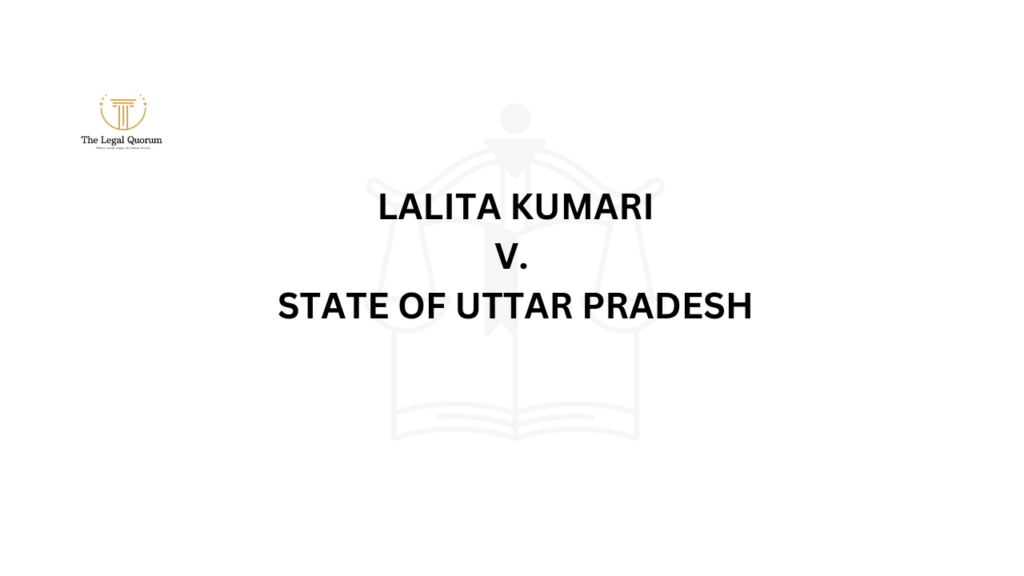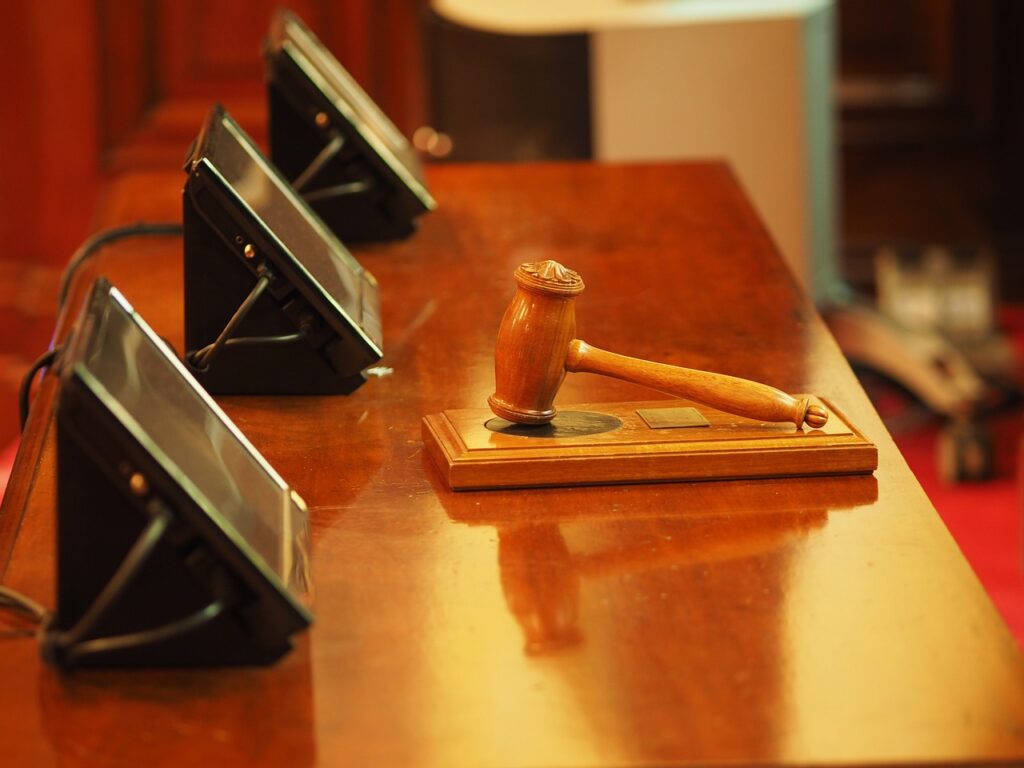Published On: 19th July 2025
Authored By: Amritava Pramanik
Department of Law, University of Calcutta
Abstract
This Article explores human trafficking in India, a serious crime that is mostly related to women and children, who were most of the time trapped through fake marriages, employment offers in foreign countries and emotional manipulation. This criminal offence includes sexual exploitation, for,ced labour and forced marriage. This article discusses the legal frameworks and social efforts to prevent these crimes, from discussing the provisions of the Constitution of India to the Bharatiya Nyaya Sanhita and Immoral Traffic Prevention Act and also discusses the government initiatives as well as the support of different NGOs, institutions like the Anti-trafficking cell and schemes like the Ujjawala scheme. This article covers the leading case laws, remaining challenges, and corruption, the need for strict law enforcement, victim rehabilitation support and solutions to the remaining challenges in this criminal offence. Finally, the article concluded with better and stricter implementations of the existing laws and addressed the main reasons for this crime.
Introduction
Human Trafficking is one of the most abominable crimes in India, which also violates human rights also. This includes sexual exploitation, forced labour, forced marriages through force, fraud, or coercion for various purposes. In 2016, according to the report of the National Crime Report Bureau, more than 8000 cases were registered of human trafficking but the actual numbers will be much higher than the reported numbers[1]. Most of the victims of this crime were women and children who were trapped in these crimes by some earning frauds, work in foreign countries, love & marriage traps, etc. In according to prevent these crimes, India has developed a multi-faceted approach regarding legal frameworks, policies, and social interventions to fight against this crime. This article explores the interventions, constitutional provisions, criminal laws, specialised legislations, government policies, and social support systems planned to prevent human trafficking, to prevent trafficking, punish the offenders, and rehabilitate the survivors. By recognizing these proceedings, one can assess India’s progress in breaking the chains of human trafficking.
Understanding Human Trafficking
In India, human trafficking has different forms, starting from sexual exploitation to forced labour and bride trafficking. these are the significant forms of trafficking in India. In this form, the brides are sold at an unbalanced gender ratio in countries. Most of the time, these trafficking are happening under the disguise of legal marriage which makes it difficult to track and address the brides. After the marriage the disguised persons sold most of the brides into the gulf countries, low amount of sex ratio areas or terrorist areas and after having their children most of them are emotionally attached to their children, those children born from these forced marriages, this type of emotional attachment making complexities even when rescue operations are possible. In 2016, there were more than 8000 trafficking cases registered throughout India, which was an increase of trafficking cases approximately 15% from the last year. In the same year, a total amount of 23,117 victims of this trafficking were rescued throughout the whole country.[2]. Most of the victims were used for Forced Labour approximately 45.5% followed by Prostitute workers approximately 21.5%[3]. This data showcases the diverse nature of trafficking operations in India and the uprising difficulties faced by the authorities. The main reasons for trafficking in India include gender discrimination, poverty, lack of education, and unstable financial conditions. And for women trafficking the main reasons were the low amount of sex ratios in certain states creating a high demand for women from the poor areas. Despite legal prohibitions, the profitability of this illegal business was the most challenging part to track and rescue the victims.
Legal Frameworks
Article 23(1) of the Constitution of India[4] Defines the foundational protection of trafficking of humans and forced labour, violating this provision can lead to punishment by the law.
The Article 24 of the Constitution of India[5] Prohibits child labour, for those who are below the age of fourteen years.
Also, the BNS[6] Provides certain legal protections and securities against trafficking:
Section 98 of the Bharatiya Nyaya Sanhita[7] States that whoever sells the child for prostitution work purposes or any illicit intercourse with any other person for any illegal or unlawful purposes will be punished according to the provision.
Section 99 of the Bharatiya Nyaya Sanhita[8] Defines that whoever buys or hires children for prostitution purposes or any illicit, illegal purposes will be punished according to the provision.
Section 139(2) of the Bharatiya Nyaya Sanhita[9] Explains that whoever kidnaps the children and after maiming the child to use them for begging will be punished according to the given provision.
Section 141 of the Bharatiya Nyaya Sanhita[10] States that anybody who imports a boy or girl from a foreign country and forces them to have illicit intercourse with another person will be punished under this provision.
Section 111(1) of the Bharatiya Nyaya Sanhita[11] Explains that any unlawful activity including kidnapping, trafficking of persons, and human trafficking for prostitution work whoever attempted or organised such crimes will be punished according to this provision.
The Immoral Traffic (Prevention) Act, of 1956[12] Address these crimes specifically:
Section 5 of the Immoral Traffic (Prevention) Act, of 1956[13] Directs that whoever procures, induces, shall take or attempts to take any person for prostitution work will be punished under this provision.
Section 6 of the Immoral Traffic (Prevention) Act, 1956[14] States that whoever keeps any other person in a brothel against his/her consent, to sexually intimidate another person rather than the spouse of the victim. Any person found in the brothel with children or with a minor for prostitution work, or unlawfully used for sexual exploitation then the person who has detained them in order shall be punished under this section.
The Immoral Traffic (Prevention) Act, of 1956[15] Explains prostitution work, and brothels as sexual exploitation or abuse of a person for commercial purposes.
With the continuing rise of online trafficking, the Information Technology (IT) Act, of 2000[16] Addresses cybercrimes:
Section 67[17] & 67A[18] of the Information Technology (IT) Act, 2000 explains the networks of online trafficking and the person who posts or transmits the nudity, and obscene materials in online platforms. This IT Act ranks as one of the strict cybercrime laws created to secure the public from hazardous online activities, including online trafficking networks and related crimes.
Also, the Protection of Human Rights Act, of 1993[19] Confers a significant role in monitoring human-trafficking-related cases.
Leading Case Laws
The leading landmark case laws regarding human trafficking in India are as follows:
Vishal Jeet v. Union of India (1990)
This case was focused on prostitution and child trafficking in red-light areas additionally the Supreme Court directed that the state government have to set up advisory committees to annihilate child prostitution and improve rehabilitation programmes.[20].
Gaurav Jain v. Union of India (1997)
This case focuses on rehabilitating the children of the prostitutes who were forced to do prostitution work. The court states preventative and rehabilitative measures for vulnerable children.[21].
Budhadev Karmaskar v. State of West Bengal (2011)
This case mainly represents the necessity of rehabilitation programmes for prostitutes or sex workers and also, and the court recognized the need for this and stated that the sex workers or prostitute workers have their right to dignity and directed the government to organize rehabilitation programmes.[22].
PUCL v. Union of India (2013)
Under this case, the court addressed bonded labour and human trafficking for labour work, so the court directed the active and effective implementation of anti-bonded laws of labour.[23].
Hanumantsing Kubersing vs. State of Madhya Pradesh (1996)
The Madhya Pradesh High Court laid down a provision conferring judicial power on an executive magistrate as it was unconstitutional to violate the differentiation of the powers between the executive and judiciary. This judgement highlighted the necessity of managing the judicial mistakes in the cases of human trafficking and ensures that in the trial of the trafficking cases, proper legal proceedings will be followed.[24].
Challenges in the Enforcement of Anti-Trafficking Laws
Despite strict legal provisions several challenges are there in the implementation:
- Despite of major amount of cases regarding human trafficking the conviction of the offenders remains low due to the delay of the proceedings and intimidation of the witness.
- The victims of these cases face severe amounts of mental trauma during the legal proceedings and the lack of enough support.
- In fact in some cases the corrupted legal officials are engaged in these trafficking networks and processes.
- Lack of enough support during the time of International trafficking cases sometimes the foreign countries did not support the other countries to investigate the case properly.
- Most of the time the trafficking happens through marriage, especially the trafficking of the bride, which creates difficulties in proper investigation.
- Most of the victims who are married forcefully and have children, because of their emotional attachment towards their children, create complexities in the rescue and rehabilitation operations.
Government Initiatives and Actions
The Indian Government especially the Ministry of Home Affairs implemented several initiatives to fight against human trafficking cases:
- The CS Division of the Ministry of Home Affairs, built an Anti-Trafficking Cell in 2006 this cell monitors all cases of human trafficking and takes decisions against the state government’s decisions on human trafficking. The Ministry also organize meetings with the cell officers from each state.
- The Ministry of Home Affairs permitted some government advisories to all the states and union territories to enhance the anti-trafficking laws. And also take advice from each state and territory to improve the laws to prevent the cases and manage the foreign nations in these trafficking cases.
- India is a signatory of the UN Convention on Transnational Organized Crime (UNCTOC) which adds certain protocols to prevent, suppress and punish the offenders of these crimes.
- India has actively supported the SAARC Convention on Preventing and Combating the Trafficking of Women and Children for Prostitution. A total of five regional task forces meetings were organized and an educational tour for the members of the SAARC was also organized in this meeting to visit India and benefit valuable learnings from the Anti Traffic Cell in India[25].
Social Interventions and Rehabilitation
Social Interventions and Rehabilitation for the victims are important and similar to the legal frameworks:
The ‘Ujjawala’ scheme was implemented by the Ministry of Women and Child Development to prevent human trafficking and rescue and rehabilitate the victims of these cases. The objectives of this scheme are to provide an instant and long period of rehabilitation services for the victims, give them proper counselling, medical treatments, shelter, food, clothing, legal aid, and also vocational training for reconstructing their financial condition and making them independent. Also, this scheme provides the reintegration of their social dignity and returns them to their families and society.[26].
Also, the NGOs and non-governmental social foundations have to give them shelter till their rehabilitation and support them to reintegrate their social dignity and make them self-independent.
Conclusion
Human Trafficking in India still faces some complexities to prevent it and prohibit it India needs to represent sustained legal frameworks and active administration, Also the legal framework evolved nowadays significantly to address the trafficking from the constitutional provisions to the particular traffic prevention act. The initiatives from the side of the Government like the establishment of an Anti-trafficking cell and the Ujjawala scheme provide immersive mechanisms to prevent and prohibit trafficking cases, especially for women and minors. However, some challenges still exist because of some corrupted legal officials engaged in these networks, proper implementation, and interstate coordination. Certain forms of trafficking like the bride from the marriage and kidnapping of the children are disguised forms of trafficking. India has to strengthen the main causes like gender discrimination, poverty, and, most important the strict implementation of the existing laws and firstly find out the corrupt officials and suspend them as soon as possible. Only by this kind of holistic approach India can truly break the chains of human trafficking and ensure the protection towards its citizens.
Reference(s):
[1] PRS Legislative Research, ‘Legislative Brief The Trafficking of Persons (Prevention, Protection and Rehabilitation) Bill, 2018’ (PRS India, 30 October 2018) <https://prsindia.org/billtrack/prs-products/prs-legislative-brief-3046> accessed 7 April 2025
[2] Ibid
[3] Ibid
[4] Constitution of India 1950, art 23(1)
[5] Constitution of India 1950, rt 24
[6] The Bharatiya Nyaya Sanhita, 2023,
[7] The Bharatiya Nyaya Sanhita, 2023, s 98
[8] The Bharatiya Nyaya Sanhita, 2023, s 99
[9] The Bharatiya Nyaya Sanhita, 2023, s 139 (2)
[10] The Bharatiya Nyaya Sanhita, 2023, s 141
[11] The Bharatiya Nyaya Sanhita, 2023, s 111 (1)
[12] The Immoral Traffic (Prevention) Act, 1956
[13] The Immoral Traffic (Prevention) Act, 1956, s 5
[14] The Immoral Traffic (Prevention) Act, 1956, s 6
[15] The Immoral Traffic (Prevention) Act, 1956
[16] The Information Technology Act, 2000
[17] The Information Technology Act, 2000, s 67
[18] The Information Technology Act, 2000, s 67A
[19] The Protection of Human Rights Act, 1993
[20] Vishal Jeet v Union Of India And Ors [1990] 1990 AIR 1412
[21] Gaurav Jain v Union Of India & Ors [1997] AIR 1997 SUPREME COURT 3021
[22] Budhadev Karmaskar v State Of West Bengal [2011] 2011 AIR SCW 1303
[23] People’s Union for Liberties & Anr v Union of India & Anr [2013] (2013) 10 SCC 1
[24] Hanumantsing Kubersing vs State Of Madhya Pradesh And Anr [1996] 1996(0)MPLJ389
[25] Dr Niteesh Upadhyay et al., ‘Report on Trafficking in India’ (OHCHR, 6 October 2024) <https://www.ohchr.org/sites/default/files/documents/issues/trafficking/cfis/gender-peace-security/subm-trafficking-gender-peace-aca-kiit-school-law.pdf> accessed 8 April 2025
[26] PIB Delhi, ‘REHABILITATION OF VICTIMS OF HUMAN TRAFFICKING’ (Press Information Bureau, 17 December 2021) <https://pib.gov.in/PressReleaseIframePage.aspx?PRID=1782640> accessed 8 April 2025



